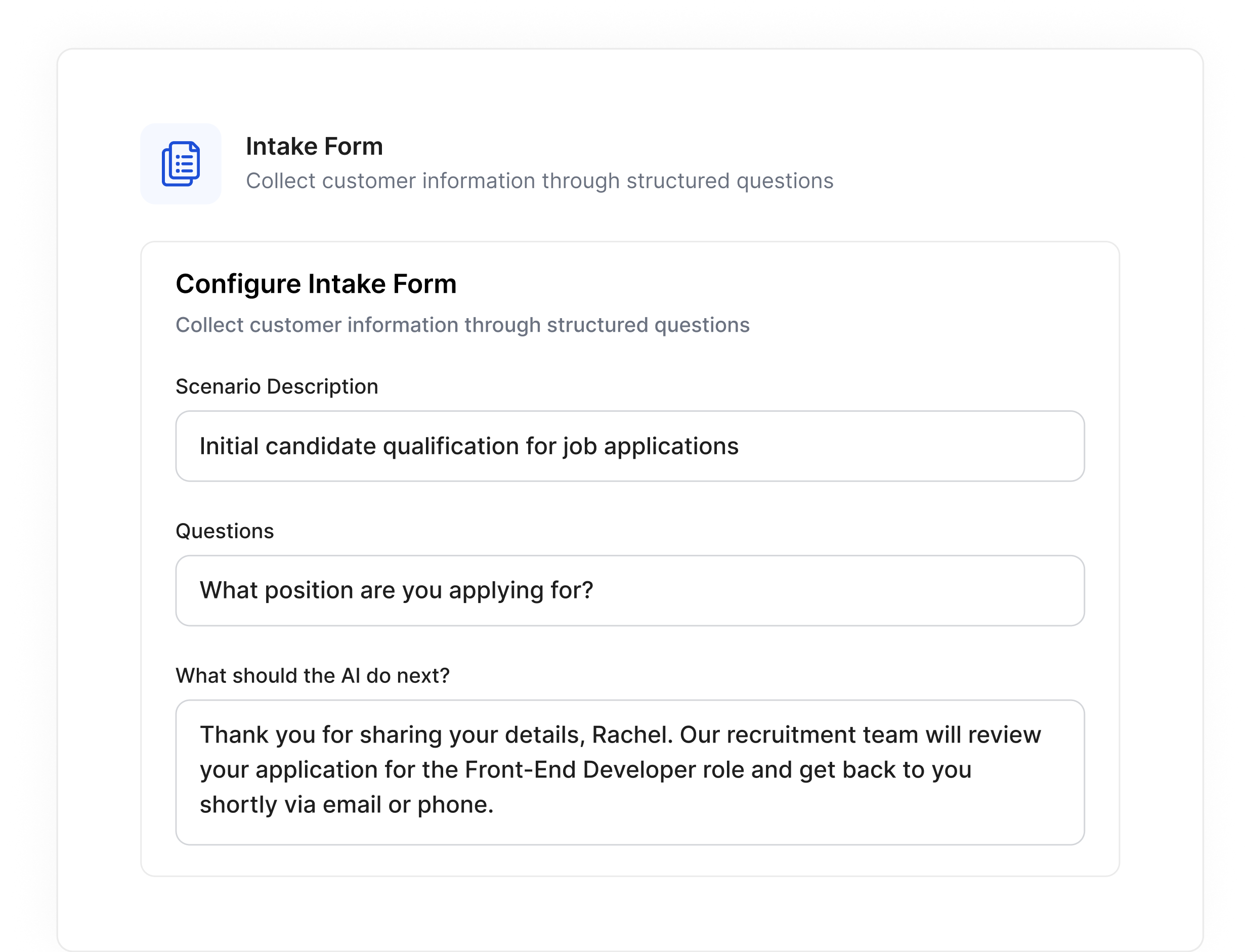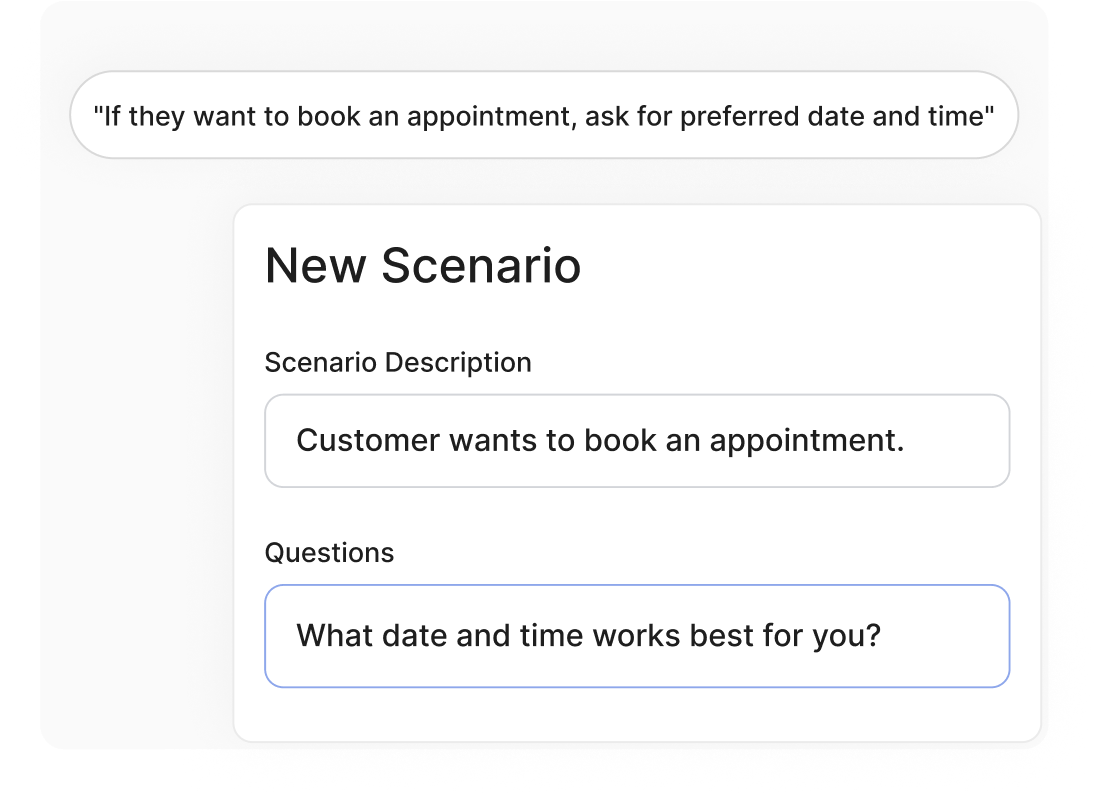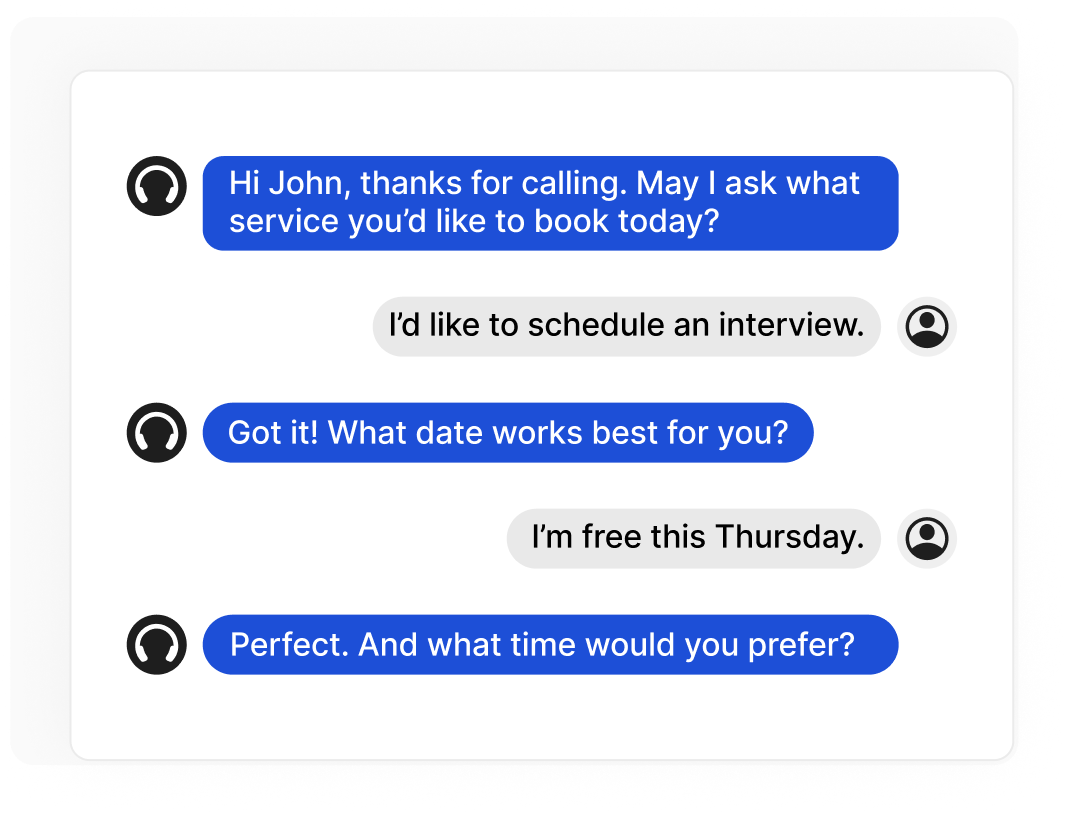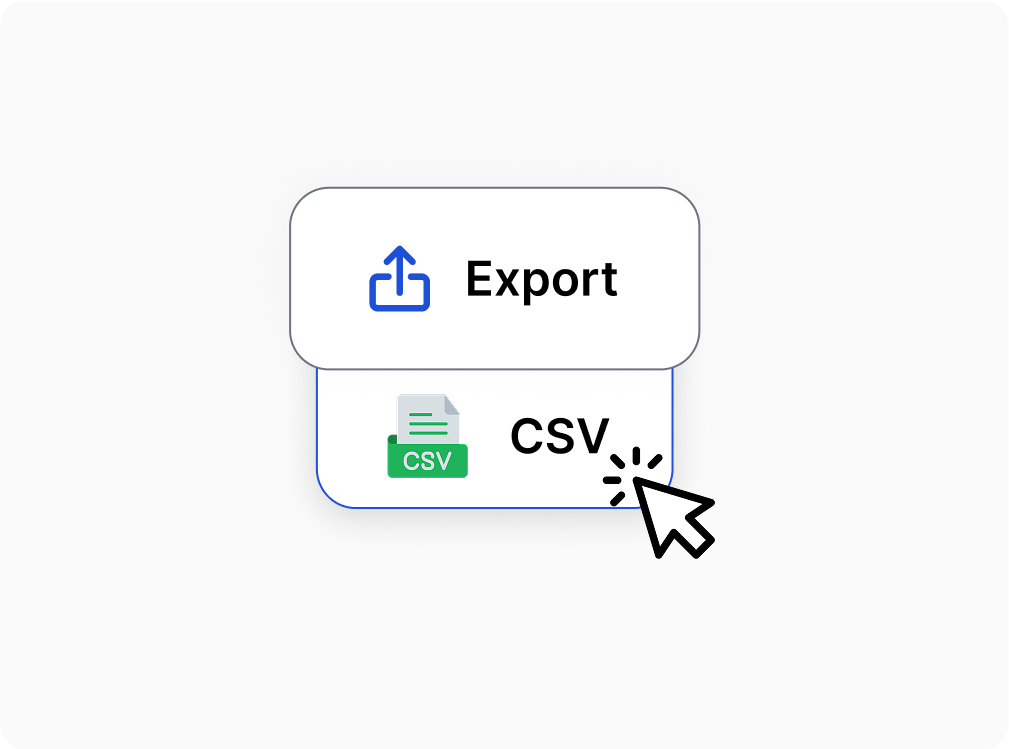Collect caller information naturally, like a human would.
Your AI receptionist gathers the details you need during conversations. No robotic questionnaires. Just smooth, natural questions.
Smart call routing that understands context
Your AI receptionist knows exactly who should handle each call—and connects them instantly.

How it works
Three steps to automatic information collection.
Define what to collect
Tell your AI what information you need and when to ask for it. Write it in plain English, just like training a new employee


AI asks naturally
During calls, your AI weaves questions into the conversation. Callers answer comfortably, not realizing they’re filling out a form.
Access your data
View all collected information in your dashboard. Export to CSV or connect to your CRM via Zapier.

“We went from 3 people managing phones to zero. The AI just… handles it. Better than we ever did.”
Park & Associates Law
Jennifer Park
Common scenario
New patient intake

“Ask for insurance provider, date of birth, and reason for visit”
Service appointments

“Collect address, preferred time, and description of the issue”
Lead qualification

“Get company size, budget range, and timeline”
Support tickets

“Ask for account number and problem description”
Event registration

“Gather attendee names, email, and dietary restrictions”
Order details

“Collect delivery address and product preferences”
Frequently Asked Questions
Do callers know they’re being asked intake questions?
It feels like a natural conversation. Your AI asks questions conversationally, not like a survey.
What if callers don’t want to answer?
Your AI moves on gracefully. Mark fields as required or optional based on your needs.
Can I customize questions for different scenarios?
Yes. Create different intake flows for sales calls, support requests, or appointments.
How many questions can I add?
Unlimited questions, but we recommend 3-5 for the best caller experience.
Where does the data go?
View in your dashboard, export as CSV, or sync automatically via Zapier.